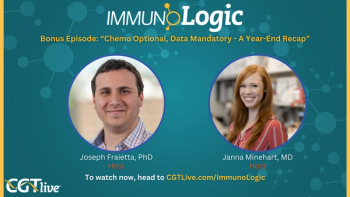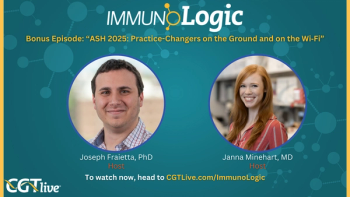
Hearing Loss in Pediatric Cancer Survivors Treated With Cisplatin
Cisplatin is effective in treating several types of childhood cancers (eg, CNS tumors, osteosarcoma, hepatoblastoma, neuroblastoma, germ cell tumors). It is the most ototoxic drug used clinically, and hearing loss is a well-recognized toxicity of cisplatin therapy.
Cisplatin is effective in treating several types of childhood cancers (eg, CNS tumors, osteosarcoma, hepatoblastoma, neuroblastoma, germ cell tumors). It is the most ototoxic drug used clinically, and hearing loss is a well-recognized toxicity of cisplatin therapy.
The effects of untreated hearing loss are significant in terms of a child’s communicative, educational, and social development. Audiologic assessment should be incorporated into a child’s medical care before, during, and after cisplatin chemotherapy.
Cisplatin ototoxicity initially presents as a loss of high-frequency hearing; it is typically bilateral and permanent and may be accompanied by tinnitus.[1] With continued treatment, it progresses in severity and spreads to affect hearing at lower frequencies. The reported incidence of hearing loss varies with differences in treatment protocols and patient variables, but hearing loss generally occurs in 20% to 70% of cisplatin recipients.[2–5]
Hearing loss can progress after treatment is completed,[2,6] and children and adolescents treated with ototoxic therapy should have long-term audiologic monitoring.
Patient Overview
DK was diagnosed with standard-risk medulloblastoma at 13 years of age. He presented with headache, double vision, disconjugate gaze, and vomiting. He underwent surgical resection, 6 weeks of craniospinal radiation (2,340 cGy to the spine and whole brain with a 3,240 cGy boost to the posterior fossa), and eight cycles of chemotherapy with CCNU (lomustine), vincristine, and cisplatin.
Before beginning radiation and chemotherapy treatment in February 2001, DK had a baseline audiologic evaluation, which showed normal hearing sensitivity in both ears. He was monitored in conjunction with his cisplatin chemotherapy treatments.
He began to exhibit hearing loss after the third cisplatin cycle, with mild (40 dB HL) hearing loss at 8,000 Hz in the left ear and 6,000–8,000 Hz in the right ear.
Evaluation after the fourth cisplatin cycle revealed mild to moderate (30–50 dB) hearing loss at 4,000–8,000 Hz in both ears. Subsequent cisplatin doses were decreased 50% for ototoxicity.
DK completed treatment in October 2001 after receiving a cumulative cisplatin dose of 450 mg/m2. At the end of treatment he had a mild sloping to severe hearing loss (40–60 dB HL) in both ears at 4,000–8,000 Hz. He noted that he had difficulty hearing in settings with noise and sometimes struggled when conversing in a group.
Now 20 years of age, DK has been without evidence of tumor recurrence. He has continued to have annual hearing evaluations, and his hearing loss has progressed over the past 6 years. His most recent evaluation in October 2007 revealed a mild sloping to severe (30–70 dB) hearing loss at 2,000–8,000 Hz in the left ear and at 1,000–8,000 Hz in the right ear.
As his hearing loss progressed, DK had increasing difficulty hearing and understanding speech, particularly during classroom lectures and discussions. He was fit with bilateral hearing aids about 4 years after completing chemotherapy treatment. He is currently attending a community college.
Nursing Management in Monitoring Ototocicity and Late Effects
When children are treated with ototoxic therapy, the risk for hearing loss should be anticipated and managed as part of the treatment plan. When hearing loss is identified, information and support is needed regarding hearing intervention and management. Families need assistance in coordinating services with audiologists, otolaryngologists, speech-language pathologists, educational providers, and community resources.
Oncology nurses are instrumental in educating families about the risk for hearing loss and the need for ongoing evaluation, and in assisting in coordination of care. Early detection of ototoxicity requires audiologic monitoring. One purpose of monitoring is to identify hearing loss before communication is significantly affected.
When hearing loss is detected, treatment may be modified to avoid further hearing loss, such as reducing the medication dose or changing to medication with less risk for ototoxicity.
When treatment cannot be altered, detection of hearing loss allows for intervention services to be implemented. Early intervention is essential for maintaining children’s communication as hearing loss develops.
Children treated with cisplatin should have a thorough baseline evaluation before treatment is initiated and should have monitoring evaluations during treatment, preferably before every cisplatin cycle.
The most common method for evaluating ototoxicity is behavioral pure tone audiometry: measurement of hearing thresholds within the speech frequency range 250–8,000 Hz. Children as young as 7–8 months old can be evaluated using visual reinforcement audiometry. Conditioned play audiometry is used to measure hearing thresholds in children aged 2½ to 6 years.
For children < 7 months of age,or those who are very ill or otherwise unable to participate in behavioral audiologic testing, pure tone thresholds can be estimated with frequency-specific auditory brainstem response (ABR, BAER) or auditory steady-state response (ASSR) testing.
Discussion
Factors placing a child at increased risk for cisplatin ototoxicity include a cumulative cisplatin dose of 360 mg/m2 or greater, CNS tumor, kidney dysfunction, and use of other ototoxic medications during treatment (eg, loop diuretics, aminoglycoside antibiotics, carboplatin).[7-9] Cranial radiation before cisplatin therapy, especially at 30 Gy (3000 cGy/rads) or higher, increases risk of hearing loss.[10,11]
Age at treatment is important. Children 5 years or younger are at significantly higher risk for moderate to severe hearing loss than older children and adolescents.[7] Dose per cycle and dosing schedule also appear to play a role.[7,12]
Cisplatin-induced hearing loss results from sensory hair cell destruction within the cochleae of the inner ear.[1,13] The underlying mechanism appears to involve generation of reactive oxygen species and depletion of cochlear antioxidants.[13] Damage begins at the cochlea base, where high-frequency sounds are processed, and proceeds towards the apex, affecting hearing at lower frequencies as the cumulative dose increases.[13]
Normal speech and language development depends upon the ability to clearly perceive the full range of speech sounds. The unvoiced high-frequency consonant sounds (s, f, th, sh, h, k, p, t) are very low in acoustic energy, so even mild high-frequency hearing loss can affect speech recognition.[14]
High-frequency speech sounds also indicate plurality (cat/cats), verb tense (walk/walked), and possession (Mike’s shoes). Children with hearing loss have difficulty understanding speech in noise and faint or distant speech.[15]
The functional impact of hearing loss depends on the child’s age, the severity of the hearing loss and affected frequency range, the timing of intervention, and other factors. Speech and language development may be affected when hearing loss is acquired in early childhood.[16]
Older children and adolescents are at risk for reduced educational achievement, social isolation, emotional difficulties, and poorer health-related quality of life.[16–19] In a study of neuroblastoma survivors, children reported as having hearing loss had twice the rate of reported learning problems in reading, writing and math, general learning disability, and need for special education services than did survivors without hearing loss.[20] Hearing loss was also associated with poorer scores in child reported quality of life in school functioning and the summary scores for psychosocial functioning.[20]
When a child has communicatively significant hearing loss, technology to improve hearing is beneficial. Hearing aids do not restore hearing but provide acoustic access to speech and sounds. FM systems reduce the negative effects of distance, reverberation, and background noise in the school setting.
Children with hearing loss may need additional accommodations and services such as preferential seating, speech-language therapy, or educational support. Since hearing loss can be progressive or delayed in onset, patients should be followed after treatment is completed.[2,6,21–23]
The Children’s Oncology Group has guidelines for long-term monitoring of children who received ototoxic treatment,[24] and educational information about hearing loss for survivors who were treated for childhood cancer (available at
Disclosures:
Financial Disclosure: The author has no significant financial interest or other relationship with the manufacturers of any products or providers of any service mentioned in this article.
References:
References
1. Blakely BW, Myers SF: Patterns of hearing loss resulting from cisplatinum therapy. Otolaryngol Head Neck Surg 109(3 Part 1):385â391, 1993.
2. Berg AL, Spitzer JB, Garvin JH: Otologic impact of cisplatin in paediatric oncology patients. Laryngoscope 109(11):1806â1814, 1999.
3. Coradini PP, Cigana L, Selistre SG, et al: Ototoxicity from cisplatin therapy in childhood cancer. J Pediatr Hematol Oncol 29(6):355â360, 2007.
4. Ilveskoski I, Saarinen UM, Wiklund T, et al: Ototoxicity in children with malignant brain tumors treated with the “8 in 1” chemotherapy protocol. Med Pediatr Oncol 27(1):26â31, 1996.
5. Knight KRG, Kraemer DF, Neuwelt EA: Ototoxicity in children receiving platinum chemotherapy: Underestimating a commonly occurring toxicity that may influence academic and social development. J Clin Oncol 23(34):8588â8596, 2005.
6. Bertolini P, Lassalle M, Mercier G, et al: Platinum compound-related ototoxicity in children: Long-term follow-up reveals continuous worsening of hearing loss. J Pediatr Hematol Oncol 26(10):649â655, 2004.
7. Li Y, Womer RB, Silber JH: Predicting ototoxicity in children: Influence of age and the cumulative dose. Eur J Cancer 40(16):2445â2451, 2004.
8. Kushner BH, Budnick AS, Kramer K, et al: Ototoxicity from high-dose use of platinum compounds in patients with neuroblastoma. Cancer 107(2):417â422, 2006.
9. Parsons SK, Neault MW, Lehmann LE, et al: Severe ototoxicity following carboplatin-containing conditioning regimen for autologous marrow transplantation for neuroblastoma. Bone Marrow Transplant 22(7):669â674, 1998.
10. Kretschmar CS, Warren MP, Lavally BL, et al: Ototoxicity of pre-radiation cisplatin for children with central nervous system tumors. J Clin Oncol 8(7):1191â1198, 1990.
11. Schell MJ, McHaney VA, Green AA, et al: Hearing loss in children and young adults receiving cisplatin with or without prior cranial irradiation. J Clin Oncol 7(6):754â760, 1989.
12. Rademaker-Lakhi JM, Crul M, Zuur L, et al: Relationship between cisplatin administration and the development of ototoxicity. J Clin Oncol 24(6):918â924, 2006.
13. Rybak LP, Whitworth CA, Mukherjea D, et al: Mechanisms of cisplatin-induced ototoxicity and prevention. Hear Res 226(1-2):157â167, 2007.
14. Stelmachowicz PG, Pittman AL, Hoover BM, et al: The importance of high-frequency audibility in the speech and language development of children with hearing loss. Arch Otolaryngol Head Neck Surg 130(5):556â562, 2004.
15. Crandell C: Speech Recognition in noise by children with minimal degrees of sensorineural hearing loss. Ear Hear 14(3):210â216, 1993.
16. Davis JM, Elfenbein JL, Schum R, et al: Effects of mild and moderate hearing impairments on language, educational, and psychosocial behavior of children.
J Speech Hear Disord 51(1):53â62, 1986.
17. Bess FH, Dodd-Murphy J, Parker RA: Children with minimal sensorineural hearing loss: Prevalence, educational performance, and functional status. Ear Hear 19(5):339â354, 1998.
18. Blair JC, Peterson ME, Viehweg SH: The effects of mild sensorineural hearing loss on academic performance of young school age children. Volta Rev 87:87â93, 1985.
19. Petrou S, McCann D, Law CM, et al: Health status and health-related quality of life preference-based outcomes of children who are aged 7 to 9 years and have bilateral permanent childhood hearing impairment. Pediatrics 120(5):1044â1052, 2007.
20. Gurney JG, Tersak JM, Ness KK, et al: Hearing loss, quality of life, and academic problems in long-term neuroblastoma survivors: A report from the Children’s Oncology Group. Pediatrics 120(5):1229â1236, 2007.
21. Dutton SC, Neault M, Billett AE, et al: Progressive ototoxicity after combined modality treatment of medulloblastoma. Int J Rad Oncol Biol Phys 36(1):38, 1996.
22. Johannesen TB, Rasmussen K, Winther FO, et al: Late radiation effects on hearing, vestibular function, and test in brain tumor patients. Int J Radiat Oncol Biol Phys 53(1):86â90, 2002.
23. Williams GB, Kun LE, Thompson WE, et al: Hearing loss as a late complication of radiotherapy in children with brain tumors. Ann Otol Rhinol Laryngol 114(4):328â331, 2005.
24. Batia S, Hudson MM: Long-term follow up guidelines for survivors of childhood, adolescent, and young adult cancers. Children’s Oncology Group, 2006. Available at:
http://www.survivorshipguidelines.org/LTFUResourceGuide.pdf
. Accessed March 3, 2008.
Newsletter
Stay at the forefront of cutting-edge science with CGT—your direct line to expert insights, breakthrough data, and real-time coverage of the latest advancements in cell and gene therapy.





































